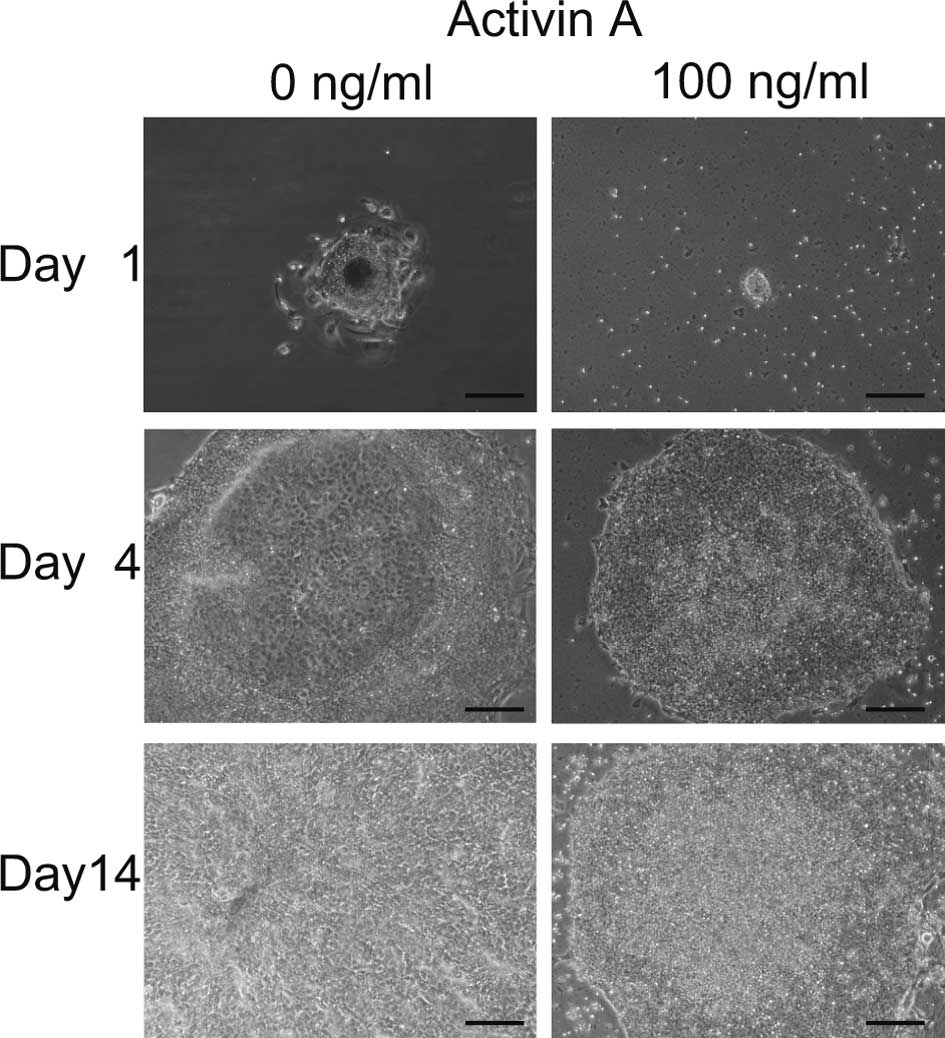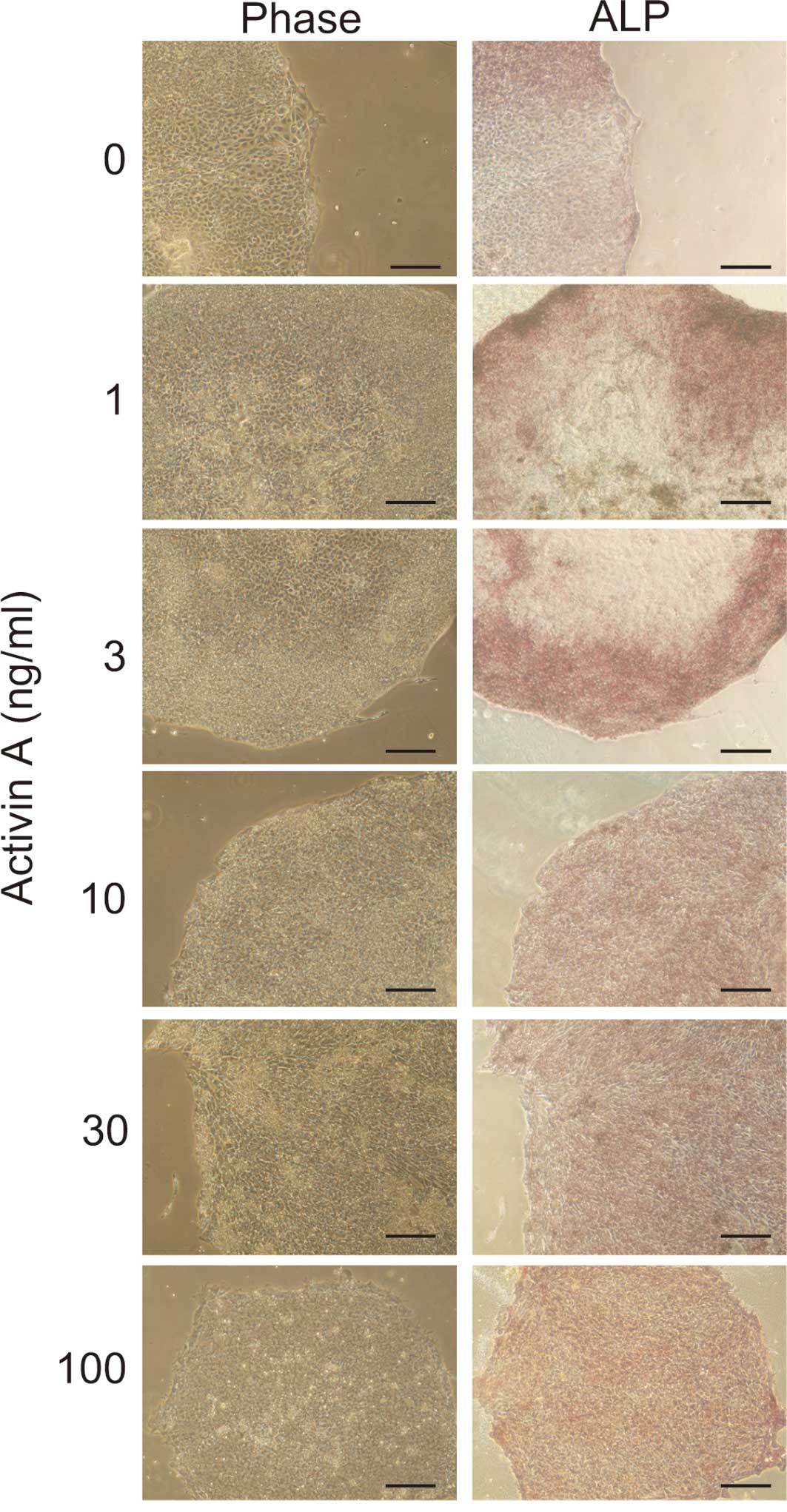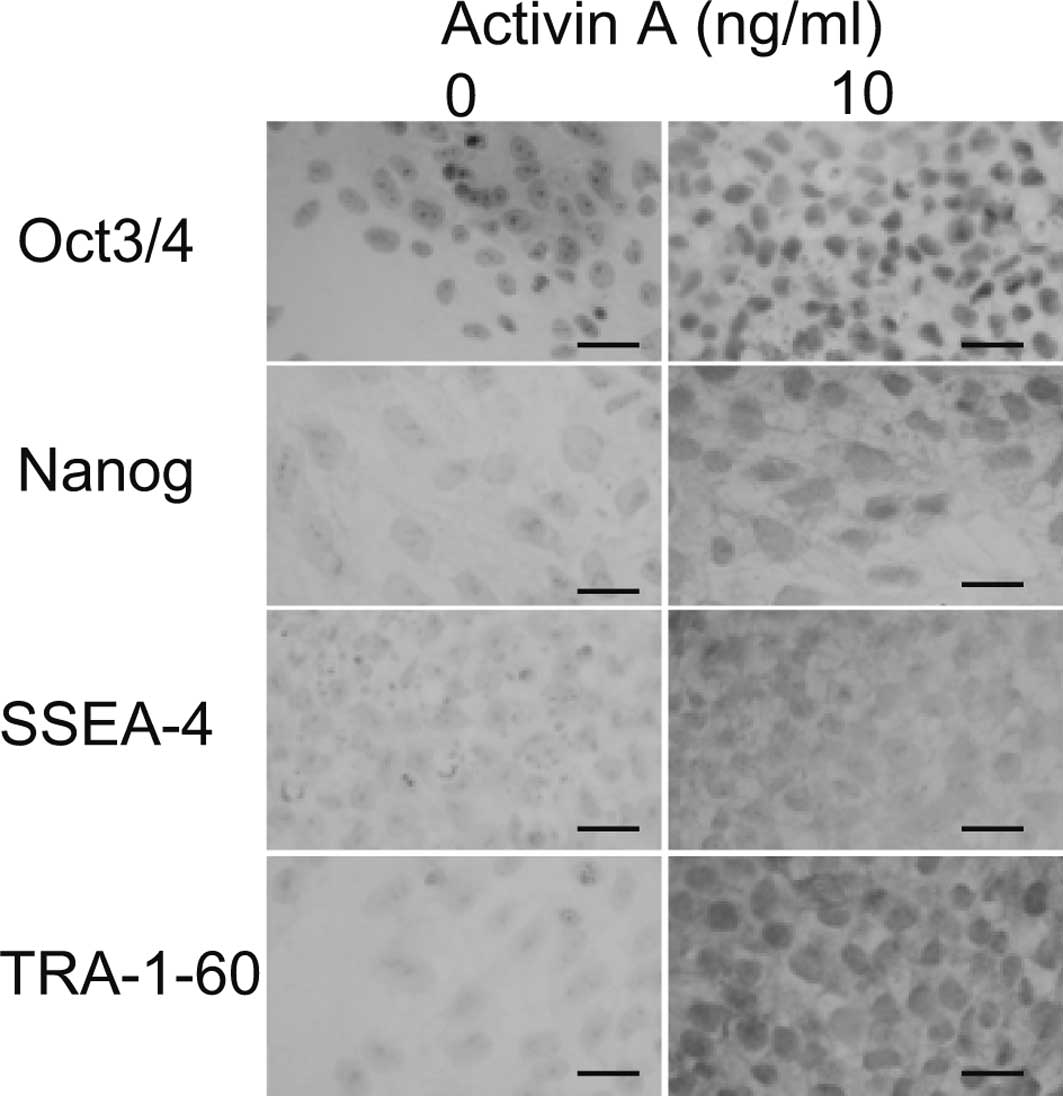|
1.
|
Sulzbacher S, Schroeder IS, Truong TT and
Wobus AM: Activin A-induced differentiation of embryonic stem cells
into endoderm and pancreatic progenitors – the influence of
differentiation factors and culture conditions. Stem Cell Rev.
5:159–173. 2009.
|
|
2.
|
Smith JC, Price BM, van Nimmen K and
Huylebroeck D: Identification of a potent Xenopus mesoderm-inducing
factor as a homologue of Activin A. Nature. 345:729–731. 1990.
View Article : Google Scholar : PubMed/NCBI
|
|
3.
|
Thomsen G, Woolf T, Whitman M, et al:
Activins are expressed early in Xenopus embryogenesis and can
induce axial mesoderm and anterior structures. Cell. 63:485–493.
1990. View Article : Google Scholar : PubMed/NCBI
|
|
4.
|
D’Amour KA, Agulnick AD, Eliazer S, Kelly
OG, Kroon E and Baetge EE: Efficient differentiation of human
embryonic stem cells to definitive endoderm. Nat Biotechnol.
23:1534–1541. 2005.
|
|
5.
|
Yao S, Chen S, Clark J, et al: Long-term
self-renewal and directed differentiation of human embryonic stem
cells in chemically defined conditions. Proc Natl Acad Sci USA.
103:6907–6912. 2006. View Article : Google Scholar : PubMed/NCBI
|
|
6.
|
Xiao L, Yuan X and Sharkis SJ: Activin A
maintains self-renewal and regulates fibroblast growth factor, Wnt,
and bone morphogenic protein pathways in human embryonic stem
cells. Stem Cells. 24:1476–1486. 2006. View Article : Google Scholar : PubMed/NCBI
|
|
7.
|
Touboul T, Hannan NR, Corbineau S, et al:
Generation of functional hepatocytes from human embryonic stem
cells under chemically defined conditions that recapitulate liver
development. Hepatology. 51:1754–1765. 2010. View Article : Google Scholar : PubMed/NCBI
|
|
8.
|
Tomizawa M, Toyama Y, Ito C, et al:
Hepatoblast-like cells enriched from mouse embryonic stem cells in
medium without glucose, pyruvate, arginine, and tyrosine. Cell
Tissue Res. 333:17–27. 2008. View Article : Google Scholar : PubMed/NCBI
|
|
9.
|
Basma H, Soto-Gutierrez A, Yannam GR, et
al: Differentiation and transplantation of human embryonic stem
cell-derived hepatocytes. Gastroenterology. 136:990–999. 2009.
View Article : Google Scholar : PubMed/NCBI
|
|
10.
|
Vallier L, Touboul T, Brown S, et al:
Signaling pathways controlling pluripotency and early cell fate
decisions of human induced pluripotent stem cells. Stem Cells.
27:2655–2666. 2009. View
Article : Google Scholar : PubMed/NCBI
|
|
11.
|
Beattie GM, Lopez AD, Bucay N, et al:
Activin A maintains pluripotency of human embryonic stem cells in
the absence of feeder layers. Stem Cells. 23:489–495. 2005.
View Article : Google Scholar : PubMed/NCBI
|
|
12.
|
Sato N, Meijer L, Skaltsounis L, Greengard
P and Hemmati-Brivanlou A: Maintenance of pluripotency in human and
mouse embryonic stem cells through activation of Wnt signaling by a
pharmacological GSK-3-specific inhibitor. Nat Med. 10:55–63. 2004.
View Article : Google Scholar : PubMed/NCBI
|
|
13.
|
James D, Levine AJ, Besser D and
Hemmati-Brivanlou A: TGFbeta/activin/nodal signaling is necessary
for the maintenance of pluripotency in human embryonic stem cells.
Development. 132:1273–1282. 2005. View Article : Google Scholar : PubMed/NCBI
|
|
14.
|
Vallier L, Mendjan S, Brown S, et al:
Activin/Nodal signalling maintains pluripotency by controlling
Nanog expression. Development. 136:1339–1349. 2009. View Article : Google Scholar : PubMed/NCBI
|
|
15.
|
Vallier L, Alexander M and Pedersen RA:
Activin/Nodal and FGF pathways cooperate to maintain pluripotency
of human embryonic stem cells. J Cell Sci. 118:4495–4509. 2005.
View Article : Google Scholar : PubMed/NCBI
|













